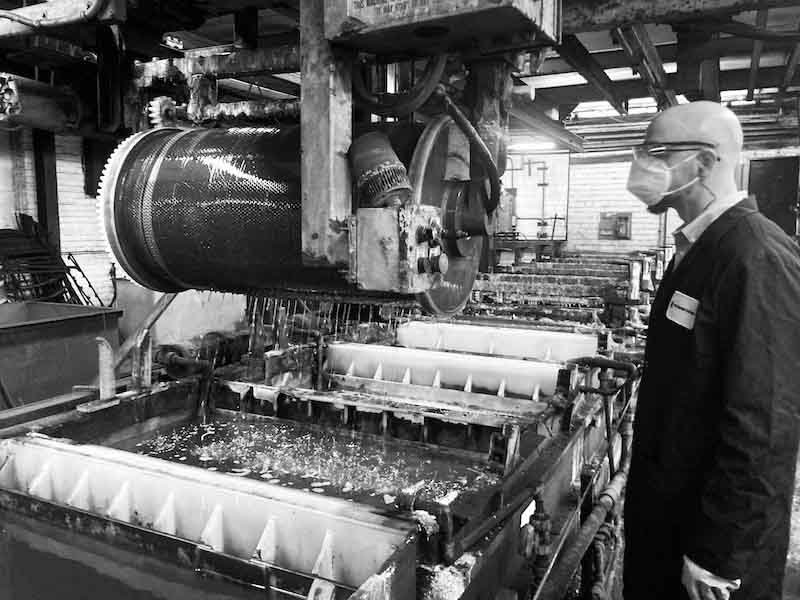As a psychosomatic union, body-soul composite, I possess an ancient, almost antiquarian, traditionalist imagination that pervades my perception and discernment of everything, including my professional life.
 Adam BlakeleyWriter Shauna Niequist shares this Catholic mentality. “I’m a blood and guts and body person, a dirt and berries and trees person. I’m a smell and taste and feel and grasp-between-my-fingers person, and … [these] are ways of living that I experience through the tactile sensations of them, not the ideas that float above them.”
Adam BlakeleyWriter Shauna Niequist shares this Catholic mentality. “I’m a blood and guts and body person, a dirt and berries and trees person. I’m a smell and taste and feel and grasp-between-my-fingers person, and … [these] are ways of living that I experience through the tactile sensations of them, not the ideas that float above them.”
Smells and Bells
Revelation and Exodus, respectively, offer an explanation: “The smoke of the incense, together with the prayers of God’s people, went up before God from the angel’s hand, [and] … the sound of the bells will be heard when [the high priest] enters the Holy Place before the Lord and when he comes out, so that he will not die … [having encountered the Almighty].”
Sounds
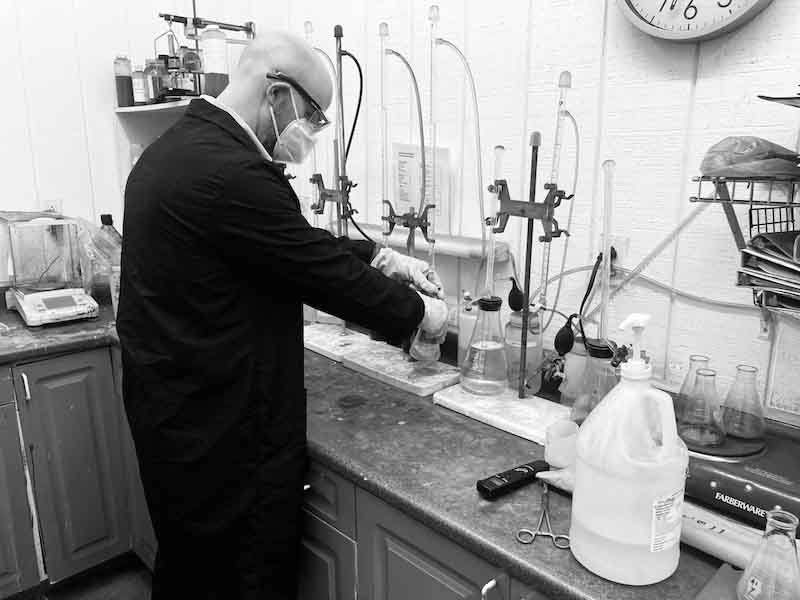 My steel-toed-work boots are encrusted with years of precipitated sediment, glossy-midnight paint droplets, and the remnants of grit-infused-industrial soap, composed of linear-biopolymer fibrils and soybean-oil-based derivatives. The boot slides carefully into a haphazard pile of a recent chemical spill covered over with absorbent granules. I tiptoe — ballerina style — through the slippery sludge to avoid unbalancing myself, falling with gear in hand and heaving a bag in tow. I hear the satisfying crunch noise rising from my heel like stiffened, desiccated leaves on a crisp, autumn day as I make my way from car to shop holding my makeshift chemistry-lab/toolkit in one hand and my scalding, artificially-flavored, hazelnut-gas-station coffee in the other, trying to sneak a few awkward, bumbling sips, which provide both satisfaction and searing pain. The sounds I relish on the plating shop floor are drowned out by the freshly plated metal parts crashing and pinging, abrading and chipping, with desultory force onto each other out of a warped and bloated hexagonal barrel.
My steel-toed-work boots are encrusted with years of precipitated sediment, glossy-midnight paint droplets, and the remnants of grit-infused-industrial soap, composed of linear-biopolymer fibrils and soybean-oil-based derivatives. The boot slides carefully into a haphazard pile of a recent chemical spill covered over with absorbent granules. I tiptoe — ballerina style — through the slippery sludge to avoid unbalancing myself, falling with gear in hand and heaving a bag in tow. I hear the satisfying crunch noise rising from my heel like stiffened, desiccated leaves on a crisp, autumn day as I make my way from car to shop holding my makeshift chemistry-lab/toolkit in one hand and my scalding, artificially-flavored, hazelnut-gas-station coffee in the other, trying to sneak a few awkward, bumbling sips, which provide both satisfaction and searing pain. The sounds I relish on the plating shop floor are drowned out by the freshly plated metal parts crashing and pinging, abrading and chipping, with desultory force onto each other out of a warped and bloated hexagonal barrel.
Smells
Moving farther onto the plating shop floor, I am pummeled with a dank but comforting ambrosial aroma, a syrupy-synthetic scent emanating from an acid chloride zinc electrolyte being broken in before the day’s full production load commences. These odors are pungent yet quite pleasant to me. They are no doubt nauseating for others, redolent of a swank, cocktail party, mixed with equal parts paint thinner, freshly distilled moonshine, and yeasty baking bread. For the uninitiated, the intensity of these smells is often overwhelming. The intensity becomes too much to bear when amalgamated with the putrefied odors of effluent discharges from a waste-water-treatment system whirring and hissing and huffing and puffing with rhythmic, hydraulic exhalations in the background. These festering cabbage-like smells mix and coalesce with the smells emerging from the un-showered, salt-of-the-earth, blue-collared, huddled masses of operators yearning to breathe free. For those inured to the antiseptic, sanitized, recycled air-and-mahogany-conditioned offices and freshly starched, petrified blouses, reeking of the latest eau-de-parfum, the odors will be especially repulsive.
Movement
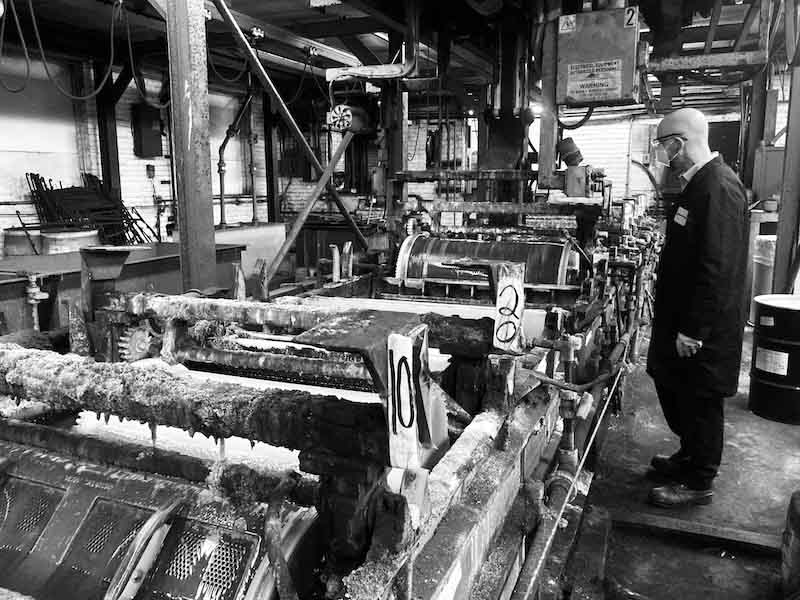 Daily activities so often proceed along procedural and predictable lines. Everything is incremental and sequential, and inevitably tedious. How best to puncture this quotidian monotony? An exploration of the chemical world is the antidote. Chemicals are decidedly anti-monotonous and anti-pedestrian. Uncivilized. Brutish. Discourteous. They march to the beat of their own drum. They make their fierce and visceral presence known, resounding with unequivocal reminders of their manifest danger. With great alacrity, they disrupt and disturb the malaise and quiet desperation enervating the soul of our lives. Hydrofluoric acid (HF-) is one such disrupting character; it deserves our respect and attention here. It should also engender a palpable fear and trepidation, especially for those who’ve encountered its noxious and pernicious energy. This horror is due not to its corrosive effects as it might be for something like sulfuric acid but rather its subtlety and insidiousness. Most strong acids respond to the moisture in and on your flesh with aggressive immediacy. You feel it. You know it’s there. You try frantically to relieve yourself of the rapacious liquid fire, scorching and consuming your very flesh. Recall the scene in David Fincher’s Fight Club with Edward Norton, our protagonist narrator, who humors a kiss on the hand from his alter ego, Tyler Durden played by Brad Pitt, only to have the intimate moment hastily interrupted by the sprinkling of concentrated lye powder (sodium hydroxide). Recall the visceral cries of agony as we endure our narrator’s anguish and subsequent relief offered only after Durden acknowledges the lesson has been learned. A simple neutralization reaction snuffed out the fire on Norton’s hand using glacial acetic acid, known in culinary circles as vinegar. This example highlights that both sides of the pH scale can be dangerous, but only at the proper concentration. As the Swiss physician and alchemist Paracelsus said, “Sola dosis facit venenum.” The dose makes the poison. Dilute amounts of any ingredient — be it lye, vinegar, sulfuric acid, or hydrofluoric acid — may be as innocent and harmless as doves or as minacious as wolves.
Daily activities so often proceed along procedural and predictable lines. Everything is incremental and sequential, and inevitably tedious. How best to puncture this quotidian monotony? An exploration of the chemical world is the antidote. Chemicals are decidedly anti-monotonous and anti-pedestrian. Uncivilized. Brutish. Discourteous. They march to the beat of their own drum. They make their fierce and visceral presence known, resounding with unequivocal reminders of their manifest danger. With great alacrity, they disrupt and disturb the malaise and quiet desperation enervating the soul of our lives. Hydrofluoric acid (HF-) is one such disrupting character; it deserves our respect and attention here. It should also engender a palpable fear and trepidation, especially for those who’ve encountered its noxious and pernicious energy. This horror is due not to its corrosive effects as it might be for something like sulfuric acid but rather its subtlety and insidiousness. Most strong acids respond to the moisture in and on your flesh with aggressive immediacy. You feel it. You know it’s there. You try frantically to relieve yourself of the rapacious liquid fire, scorching and consuming your very flesh. Recall the scene in David Fincher’s Fight Club with Edward Norton, our protagonist narrator, who humors a kiss on the hand from his alter ego, Tyler Durden played by Brad Pitt, only to have the intimate moment hastily interrupted by the sprinkling of concentrated lye powder (sodium hydroxide). Recall the visceral cries of agony as we endure our narrator’s anguish and subsequent relief offered only after Durden acknowledges the lesson has been learned. A simple neutralization reaction snuffed out the fire on Norton’s hand using glacial acetic acid, known in culinary circles as vinegar. This example highlights that both sides of the pH scale can be dangerous, but only at the proper concentration. As the Swiss physician and alchemist Paracelsus said, “Sola dosis facit venenum.” The dose makes the poison. Dilute amounts of any ingredient — be it lye, vinegar, sulfuric acid, or hydrofluoric acid — may be as innocent and harmless as doves or as minacious as wolves.
Fear
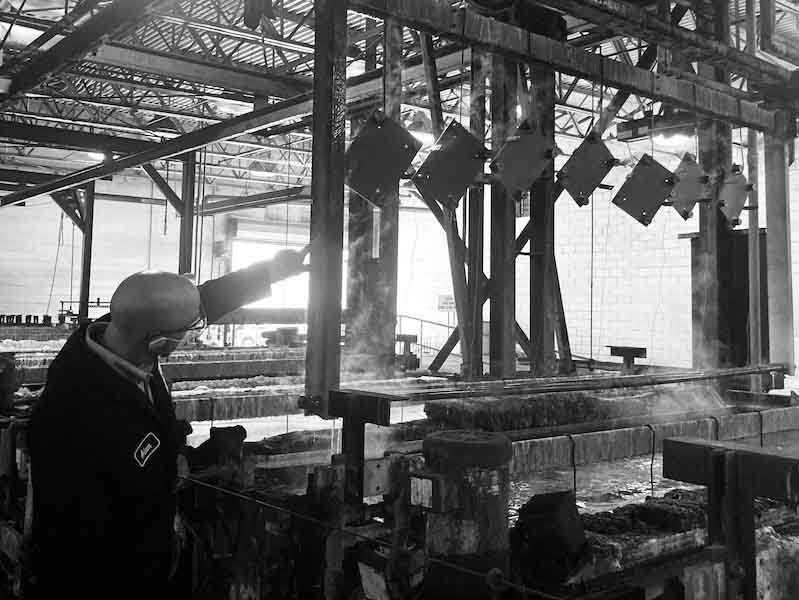 Hydrofluoric acid (HF) is in a class and category all it’s own because it possesses a nuance and sophistication all its own, akin to a femme fatale. It is in this acid’s quiet elusiveness that it fosters its mystery, allure, and danger. The intrigue deepens as those inclined to discover more realize it is defined as a weak acid due to its poor or low ionization rate. Many might assume this renders it innocuous. Surely only the strong acids justify apprehension. Unfortunately, this is not the case. Low ionization simply means that the acid fails to produce a high concentration of hydrogen ions in solution, but therein lies the threat. Spill small amounts of concentrated HF on your skin, and you most likely won’t experience acid the way you might suppose you would or should like blood from a Xenomorph in a Ridley Scott movie tearing through a reinforced-titanium ship hull. The reaction on your skin, again, is attenuated. The victim of a spill may not even be cognizant of the accident and the inevitable peril. The acid will most likely bypass the upper dermal layer, unlike the burly, hygroscopic sulfuric, or hydrochloric acids, which charge at the moisture in your skin like a matador’s bull seeing red. You will feel the horns. But with HF, it will most often dissociate or dissolve into individual hydrogen (H+) and fluoride (F-) ions. Those H+ ions may not present as but an almost indiscernible and undetectable burn, but the frightening secondary contingent to that chemical formula is the F- ion. This ion moves stealthily through the muscle tissue to find and destroy the calcium and magnesium constituents found in your very bones, ripping out their very soul and marrow. The ancillary reality, equally as terrifying, is that because HF interferes with nerve function, the burns may go unnoticed and therefore untreated for several hours, if not days, and so associated hypocalcemia or hypomagnesemia (dangerously low levels of calcium and magnesium) may result in death due to heart arrhythmia complications.
Hydrofluoric acid (HF) is in a class and category all it’s own because it possesses a nuance and sophistication all its own, akin to a femme fatale. It is in this acid’s quiet elusiveness that it fosters its mystery, allure, and danger. The intrigue deepens as those inclined to discover more realize it is defined as a weak acid due to its poor or low ionization rate. Many might assume this renders it innocuous. Surely only the strong acids justify apprehension. Unfortunately, this is not the case. Low ionization simply means that the acid fails to produce a high concentration of hydrogen ions in solution, but therein lies the threat. Spill small amounts of concentrated HF on your skin, and you most likely won’t experience acid the way you might suppose you would or should like blood from a Xenomorph in a Ridley Scott movie tearing through a reinforced-titanium ship hull. The reaction on your skin, again, is attenuated. The victim of a spill may not even be cognizant of the accident and the inevitable peril. The acid will most likely bypass the upper dermal layer, unlike the burly, hygroscopic sulfuric, or hydrochloric acids, which charge at the moisture in your skin like a matador’s bull seeing red. You will feel the horns. But with HF, it will most often dissociate or dissolve into individual hydrogen (H+) and fluoride (F-) ions. Those H+ ions may not present as but an almost indiscernible and undetectable burn, but the frightening secondary contingent to that chemical formula is the F- ion. This ion moves stealthily through the muscle tissue to find and destroy the calcium and magnesium constituents found in your very bones, ripping out their very soul and marrow. The ancillary reality, equally as terrifying, is that because HF interferes with nerve function, the burns may go unnoticed and therefore untreated for several hours, if not days, and so associated hypocalcemia or hypomagnesemia (dangerously low levels of calcium and magnesium) may result in death due to heart arrhythmia complications.
If that doesn’t give you pause to reconsider the redoubtable and awe-inspiring nature of chemicals, and especially of acids, I don’t think you heeded my warning and paid sufficient attention.
See
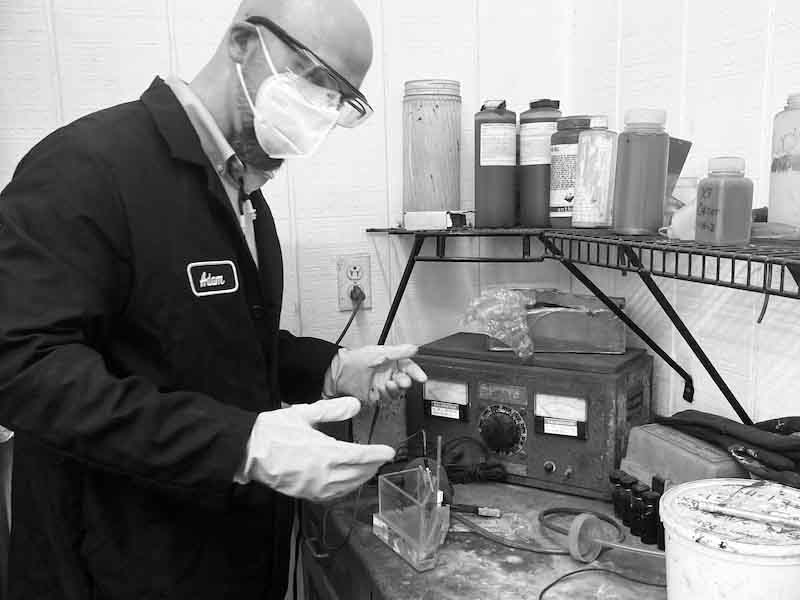 Vision and perception. Moving beyond the realm of the macabre now but keeping within the dimension of violent chemical reactions, we move into the laboratory where I drop a zinc-plated electropolished steel panel into a bottle of urine-colored hydrochloric acid and see what happens. It’s a commonplace procedure I’ve completed hundreds of times before, and yet it still never ceases to instill in me an appreciation for the explosive potential, ferocity, and sheer beauty of the natural world. You may ask, “Hydrochloric acid is natural?” For sure. How else do you think your body’s digestive system breaks down your food? Gastric juices are at least partially composed of this flaxen-hued acid with the power to strip hundreds of micro-inches of zinc metal plating off a steel panel in less than ten seconds. We homo sapiens attempt to tame the world at every turn and for good reason as it stands to try to kill us almost daily and is a divinely bequeathed prerogative, or at least it is “over the fish of the sea … the birds of the air … and over every creeping thing that creeps upon the earth.” Acids certainly do their fair share of creeping me out, and so I lump them in with this Scriptural injunction. The chemical world privileges me a glimpse outside the cloistered confines of normal life and into the feral and barbarous majesty of a dynamic and undomesticated microcosm, teeming with frenetic ions girding their loins for battle. The plastic bottle housing the acid is perfectly content to rub elbows with this pugnacious fluid for weeks, months, and even years on end without ever engaging in even the littlest of tiffs. Plastic may seem only suited to toddler toys, but it puts up an impressive defense against the dark arts of the hydrogen ion world. Strangely enough, the stuff protecting the steel on our highway’s galvanized guard rails, which are there to keep our two-metric-ton vehicles from careening into a ditch or hill, is zinc. Zinc has many unique characteristics; among these are its high reactivity and low passivity, which allows it to act as a holocaust offering. Zinc is not unlike the proto-Christian-martyr and deacon, St. Stephen, who was stoned to death for his faith. Zinc is called a sacrificial metal when plated over a ferrous (iron) substrate, which ranks lower on the electromotive force scale. The corrosive and oxidizing forces in our atmosphere will choose the more excitable and sensitive zinc over the more readily available steel, which is permitted to conserve its structural integrity and tensile strength. These simple facts give me pause to consider my immediate perceptions. Things are not always what they seem. Brittle, flimsy, and diaphanous polypropylene plastic can protect you from the strongest of acids, but reinforced steel barriers covered with a gray, frail, damsel-in-distress type metal is no match for it. It helps to be continually reminded of the paradoxes of the natural world of which there are many.
Vision and perception. Moving beyond the realm of the macabre now but keeping within the dimension of violent chemical reactions, we move into the laboratory where I drop a zinc-plated electropolished steel panel into a bottle of urine-colored hydrochloric acid and see what happens. It’s a commonplace procedure I’ve completed hundreds of times before, and yet it still never ceases to instill in me an appreciation for the explosive potential, ferocity, and sheer beauty of the natural world. You may ask, “Hydrochloric acid is natural?” For sure. How else do you think your body’s digestive system breaks down your food? Gastric juices are at least partially composed of this flaxen-hued acid with the power to strip hundreds of micro-inches of zinc metal plating off a steel panel in less than ten seconds. We homo sapiens attempt to tame the world at every turn and for good reason as it stands to try to kill us almost daily and is a divinely bequeathed prerogative, or at least it is “over the fish of the sea … the birds of the air … and over every creeping thing that creeps upon the earth.” Acids certainly do their fair share of creeping me out, and so I lump them in with this Scriptural injunction. The chemical world privileges me a glimpse outside the cloistered confines of normal life and into the feral and barbarous majesty of a dynamic and undomesticated microcosm, teeming with frenetic ions girding their loins for battle. The plastic bottle housing the acid is perfectly content to rub elbows with this pugnacious fluid for weeks, months, and even years on end without ever engaging in even the littlest of tiffs. Plastic may seem only suited to toddler toys, but it puts up an impressive defense against the dark arts of the hydrogen ion world. Strangely enough, the stuff protecting the steel on our highway’s galvanized guard rails, which are there to keep our two-metric-ton vehicles from careening into a ditch or hill, is zinc. Zinc has many unique characteristics; among these are its high reactivity and low passivity, which allows it to act as a holocaust offering. Zinc is not unlike the proto-Christian-martyr and deacon, St. Stephen, who was stoned to death for his faith. Zinc is called a sacrificial metal when plated over a ferrous (iron) substrate, which ranks lower on the electromotive force scale. The corrosive and oxidizing forces in our atmosphere will choose the more excitable and sensitive zinc over the more readily available steel, which is permitted to conserve its structural integrity and tensile strength. These simple facts give me pause to consider my immediate perceptions. Things are not always what they seem. Brittle, flimsy, and diaphanous polypropylene plastic can protect you from the strongest of acids, but reinforced steel barriers covered with a gray, frail, damsel-in-distress type metal is no match for it. It helps to be continually reminded of the paradoxes of the natural world of which there are many.
Touch
My professional life is guided by a maxim known as “high-touch, low asset.” This short but profound aphorism simply means that I spill my blood, sweat, and tears in the pursuit of service showcased in my direct face-to-face connections with customers versus relying on capital investments in ostentatious chemical equipment and extravagant laboratory supplies — a time when the bells and whistles do not suit my Catholic imagination. A personal touch is essential to success in the surface finishing industry. Having encountered hundreds of people in the world of electroplating forces me to contend with the idea that is not wholly grounded in rationality. I sometimes suppose many of us are born into an era not wholly suited to us. Some might have found more solace and comfort having been reared in the culture of the 1950s (like my wife) or the 1820s (like me) or even the 1200s like many of the wonderful people I encounter in a plating shop. I could see them wielding an axe or claymore on the foggy highlands of Scotland, squaring off against the oppressive and draconian English in the Battle of Falkirk. These battlefield conscripts living today are suited rather enter the plating life where they ascend the catwalk in the wee hours of the morning as refracting waves of heat rise off a decades-old, bright, emerald-green, Watts nickel bath set at a sweltering 145° Fahrenheit.
Taste
As a millennial and married to a borderline hypochondriac, I refrain from tasting almost anything in a plating shop. Should I return to the paragraph on smells to justify my resistance and the perpetual smell of rancid Asian dumplings upon entering a plating shop? No matter. The plating shop line operators — or reincarnated denizens of the Picts and Gaels — do not forbear this resistance. Without prompting, they dip their ungloved index finger, cracked and fractured along the contours of their prints from exposure to potash residues, and caked-up with grease and other unmentionables, into the green, acidic ooze to give it a taste. As legend has it, this is done to determine the sweetness of the bath. The primary brightening agent in these baths is a sulfonamide known as saccharine or, to those who roll the cancer dice, Sweet and Low, an artificial coffee sweetener, like sucralose. The platers might even deign to visit the laboratory from time to time, which is more than likely simply an extended broom closet, or an improvised board jutting out of a wall, and risk certain death by placing their mouths on the ends of soiled pipettes, or glass straws, laced with potentially poisonous levels of residual cyanide uncleaned from a recent copper analysis. Some might recruit the use of forethought to at least smell the end of the pipette to ensure the roasted almond smell of cyanide had dissipated, but some might also ignore this policy in favor of bravado. We live today in such a sterilized and fumigated world that we cannot help but gape in awe and appreciation for the raw, earthy, and enterprising audaciousness of these contemporaries of ours that seem so disjointed and out-of-place and who might not be able to tell an ion from an isotope and yet are able to produce what can only be properly termed, works of art.
Adam Blakeley is Director of Technical Services for the Eastern Region at MacDermid Enthone Industrial Solitions, as well as a Master Surface Finisher. He has authored papers for numerous industry publications, and is a foremost expert in electroplating.





